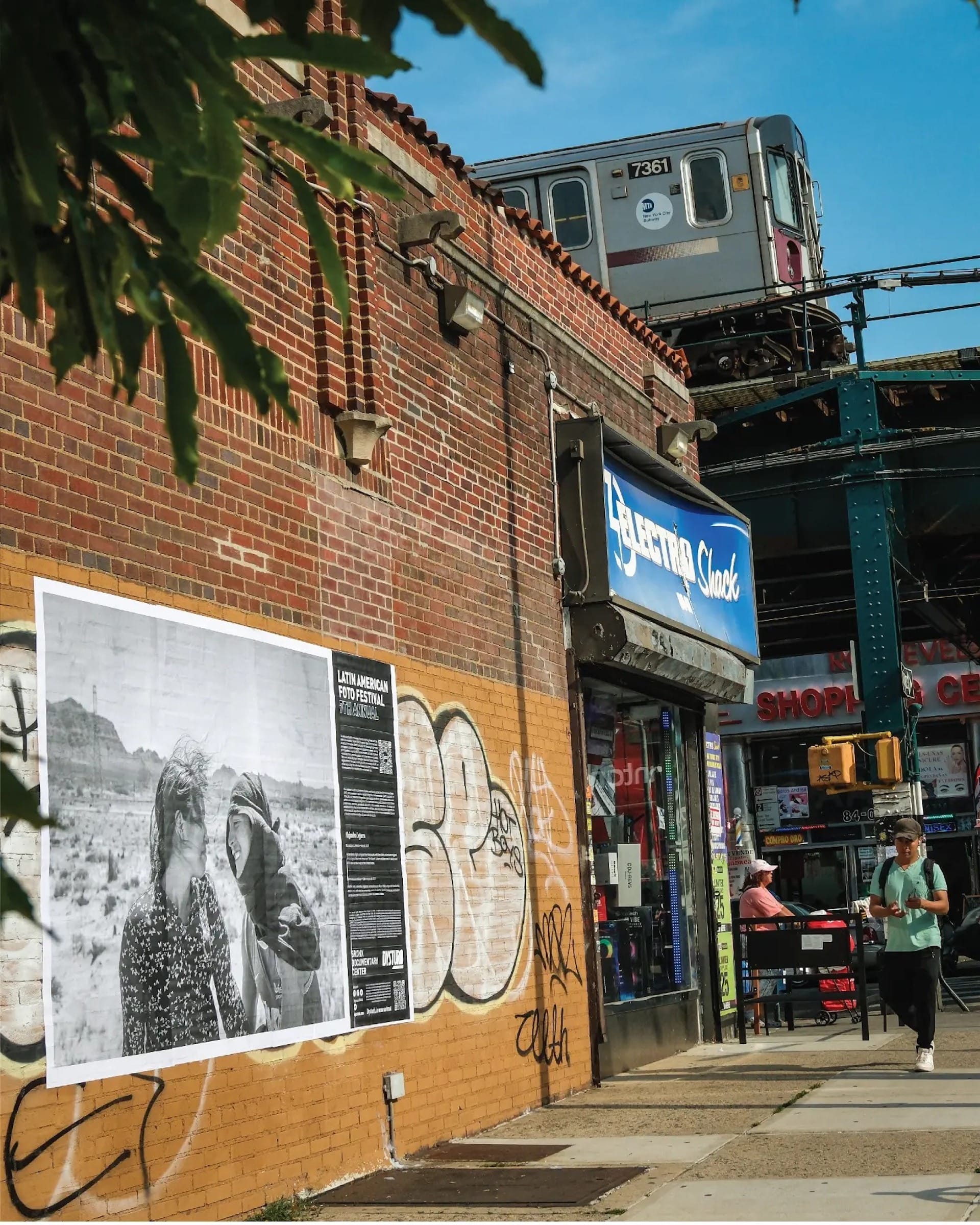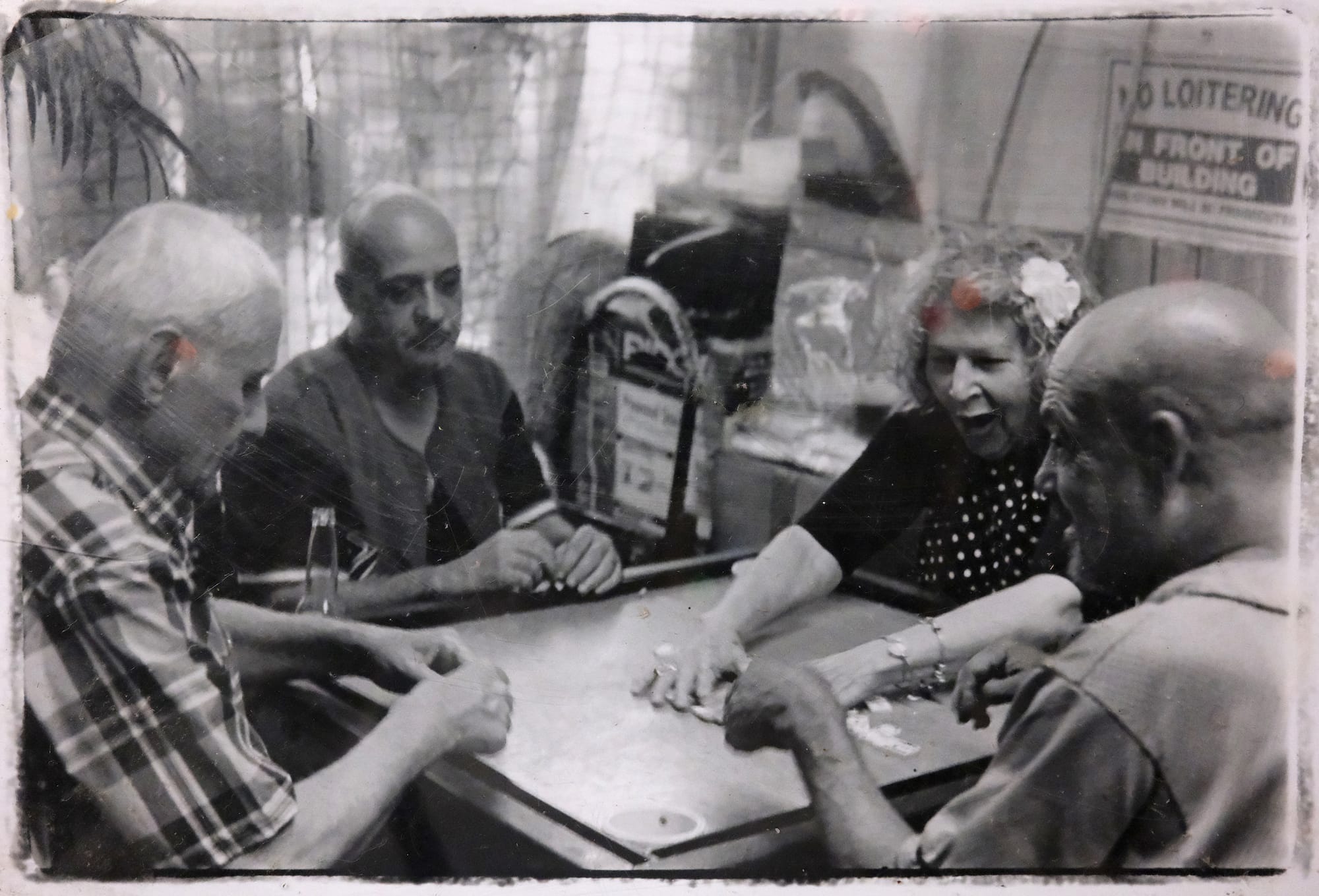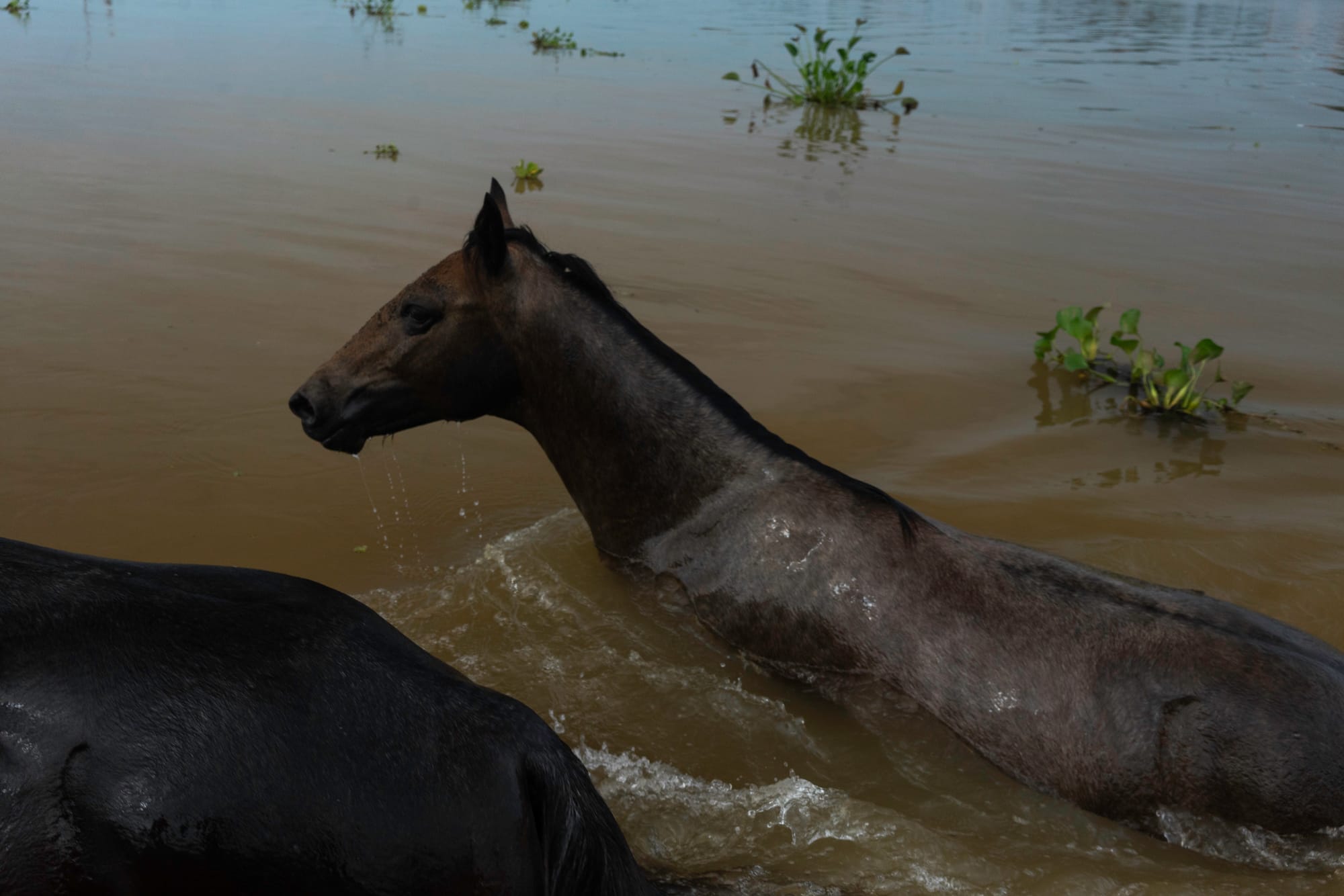Latin American Foto Festival Expands Beyond the Bronx
Work by photographers from Guatemala to Brazil can be found in historically Latine neighborhoods across New York City.
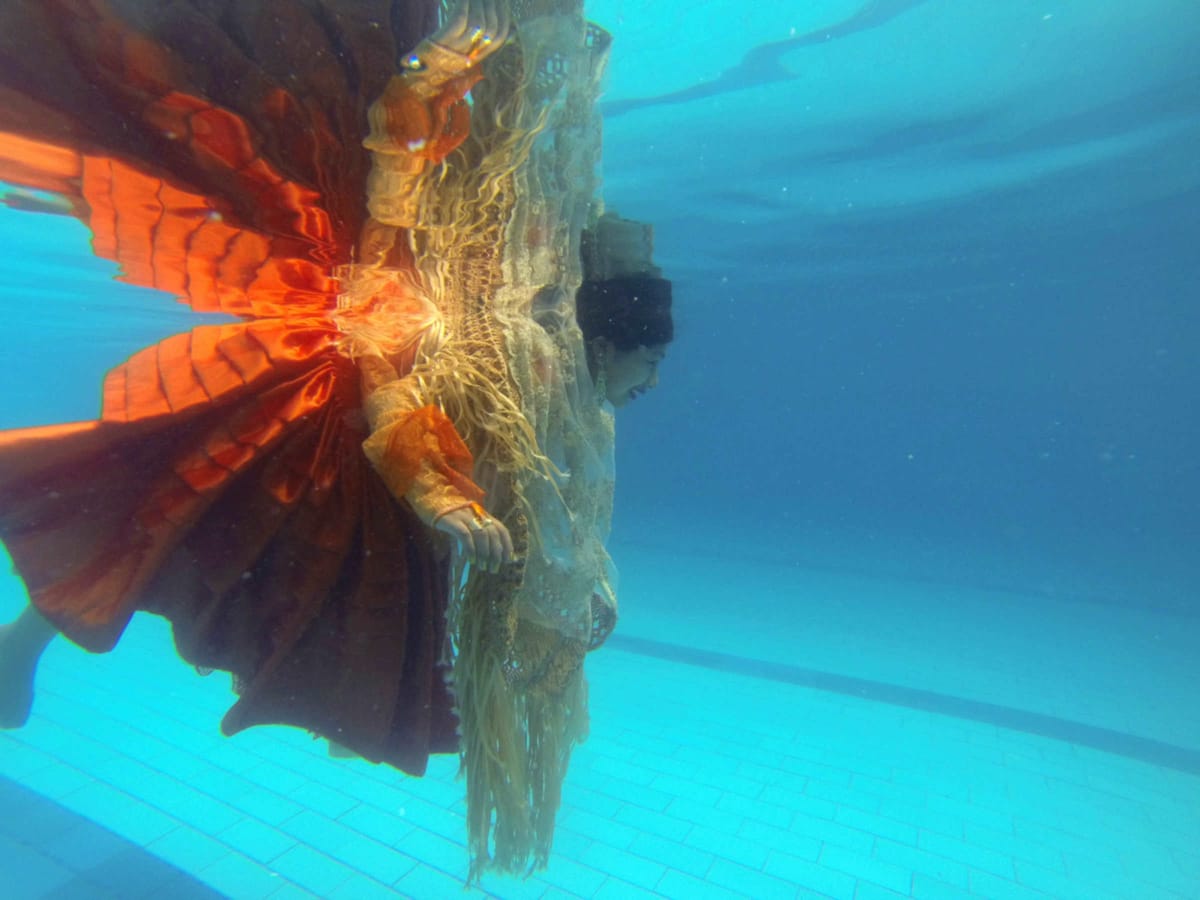
In late July, as the dog days of summer coated every inch of New York City in a warm, sticky sweat, a series of photos lining the sidewalk of Melrose Avenue in the South Bronx offered a glimpse into an aquatic escape. In the images, from Bolivian photographer Wara Vargas’s documentary project Sueña (2017), elaborately dressed women floated peacefully in the cerulean haven of a far-off swimming pool.
Part of the Bronx Documentary Center's (BDC) seventh Latin American Foto Festival (LAFF), Vargas's work focuses on her home country’s Indigenous Aymara and Quechua community members, specifically a group of women who self-describe as cholas — a term with racist, derogatory roots that has since been reclaimed by Indigenous communities. Set underwater, the series spotlights their recognizable day-to-day wear, which typically consists of embroidered garbs (polleras) layered with colorful underskirts (enaguas), elegant jewelry, and long plaited hair topped with perilously perched bowler hats.
“I want the Bolivian community to feel part of the cultural movement of [New York City] and for the most humble migrant workers who see the photos to feel proud of their roots,” Vargas told Hyperallergic.
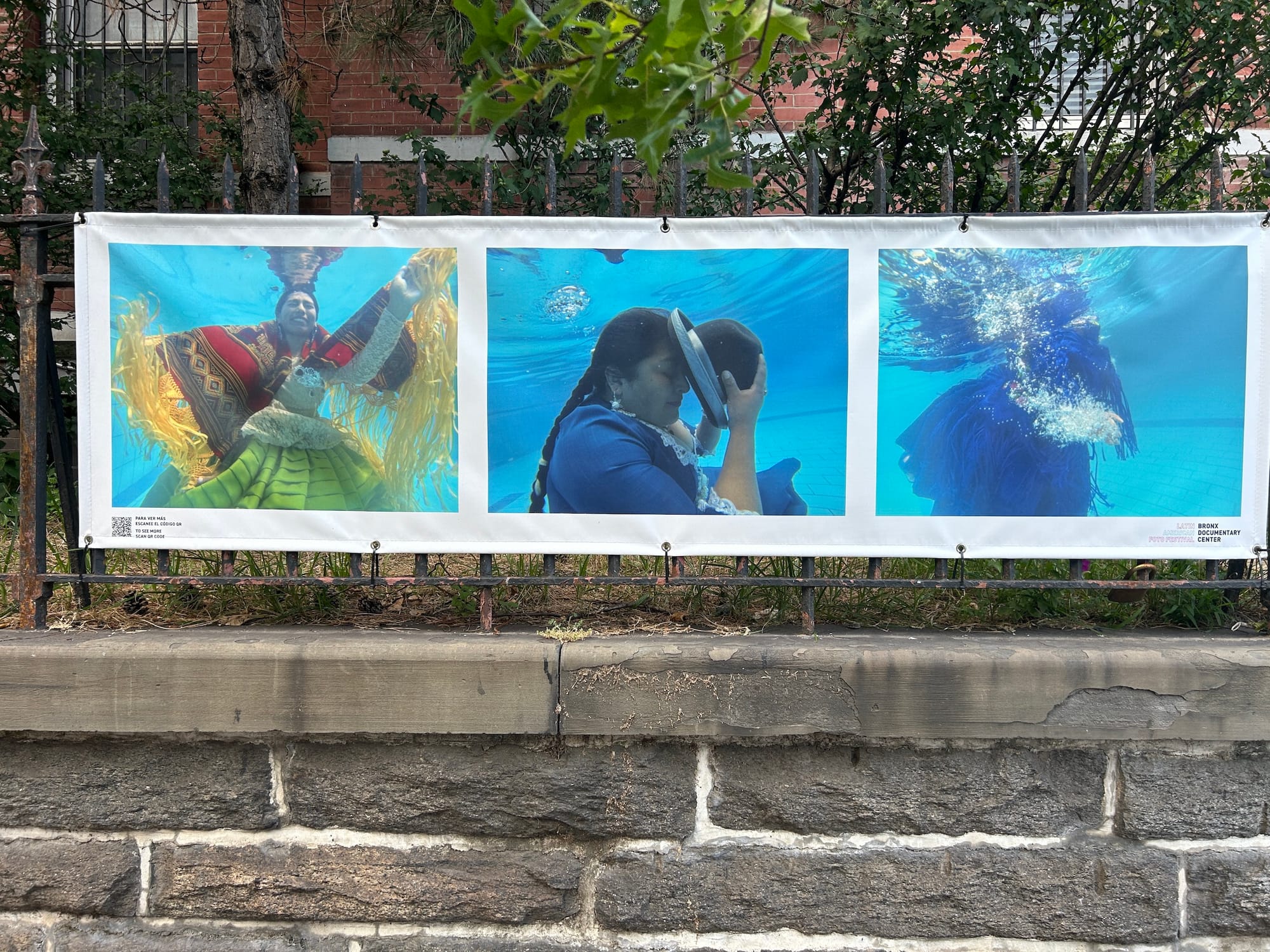
The photographic celebration of cholita heritage is just one of 10 projects featured in LAFF this year. Curated by Cynthia Rivera and Michael Kamber, the show presents the work of photographers and organizations spanning Brazil, Cuba, Guatemala, Mexico, Peru, and Bolivia, among other countries. LAFF was initially exhibited for two weeks in July, when the large-scale photographs were displayed across four boroughs on public fences, building exteriors, and community garden perimeters; the festival continues its run at locations in Lower Manhattan and Hunts Point throughout August.
Other works presented in this year's program include Alejandro Cegarra’s The Two Walls (2019–2023), a grayscale series capturing the impact of the United States government’s anti-migrant immigration policies on asylum seekers in Mexico. Magda Gibelli’s Ballet Without Barriers (2023) focuses on a Peruvian ballet school with accessible classes for any and all students, and Santiago Billy's El Palo Volador - Reaching Heaven (2016–ongoing) chronicles a centuries-old ritual dance in a Guatemalan village.
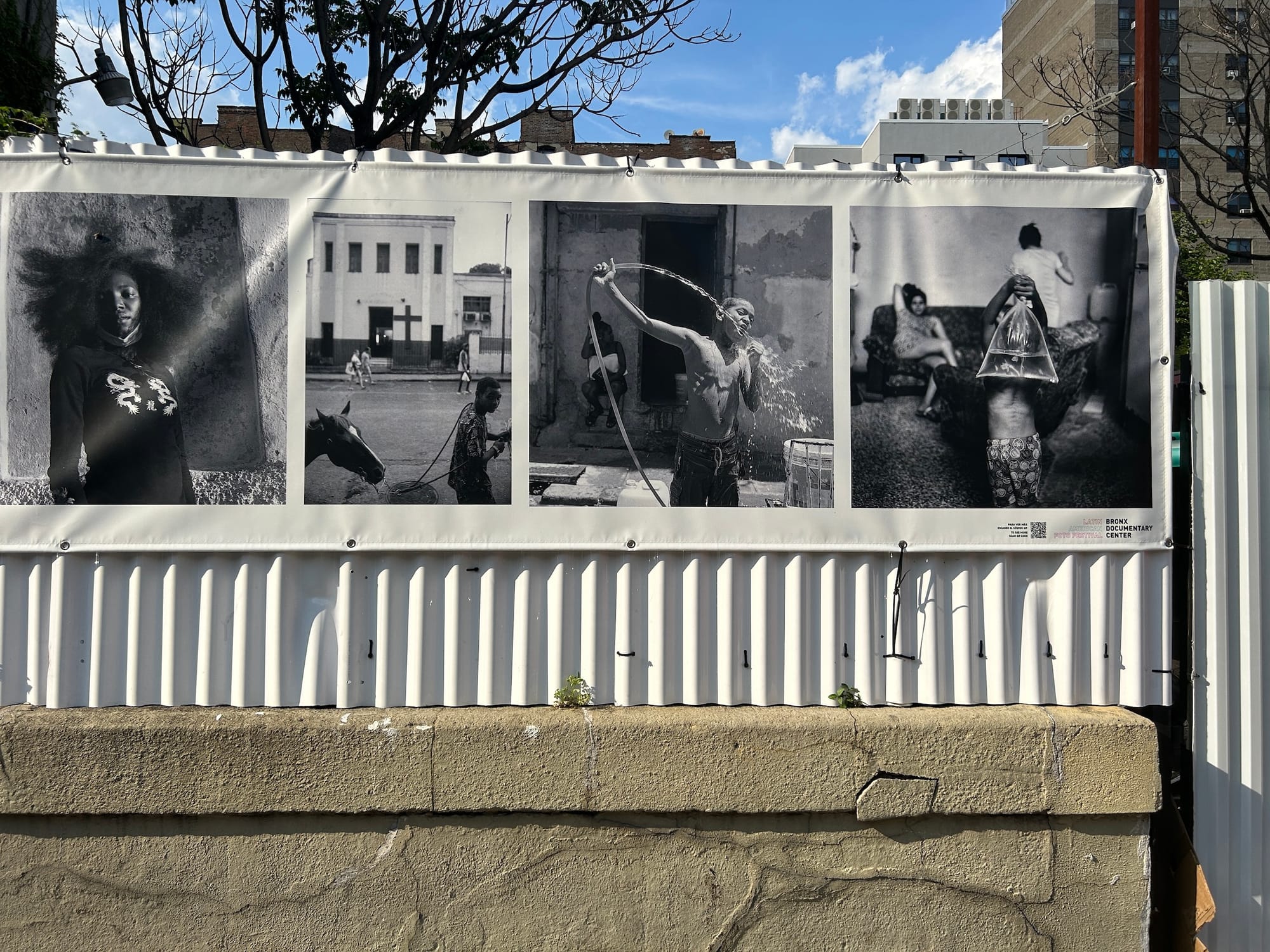

Jorge Santiago, whose project Identity At Play (2009–2024) focuses on basketball culture in the Indigenous communities of Oaxaca's heavily forested Sierra Norte region, emphasized the significance of having his photos displayed in the Bronx, where they can be seen by a broader audience.
“I'm hoping spectators will see themselves reflected in the images, and will remember that even from afar they are still an important part of their communities,” Santiago told Hyperallergic.

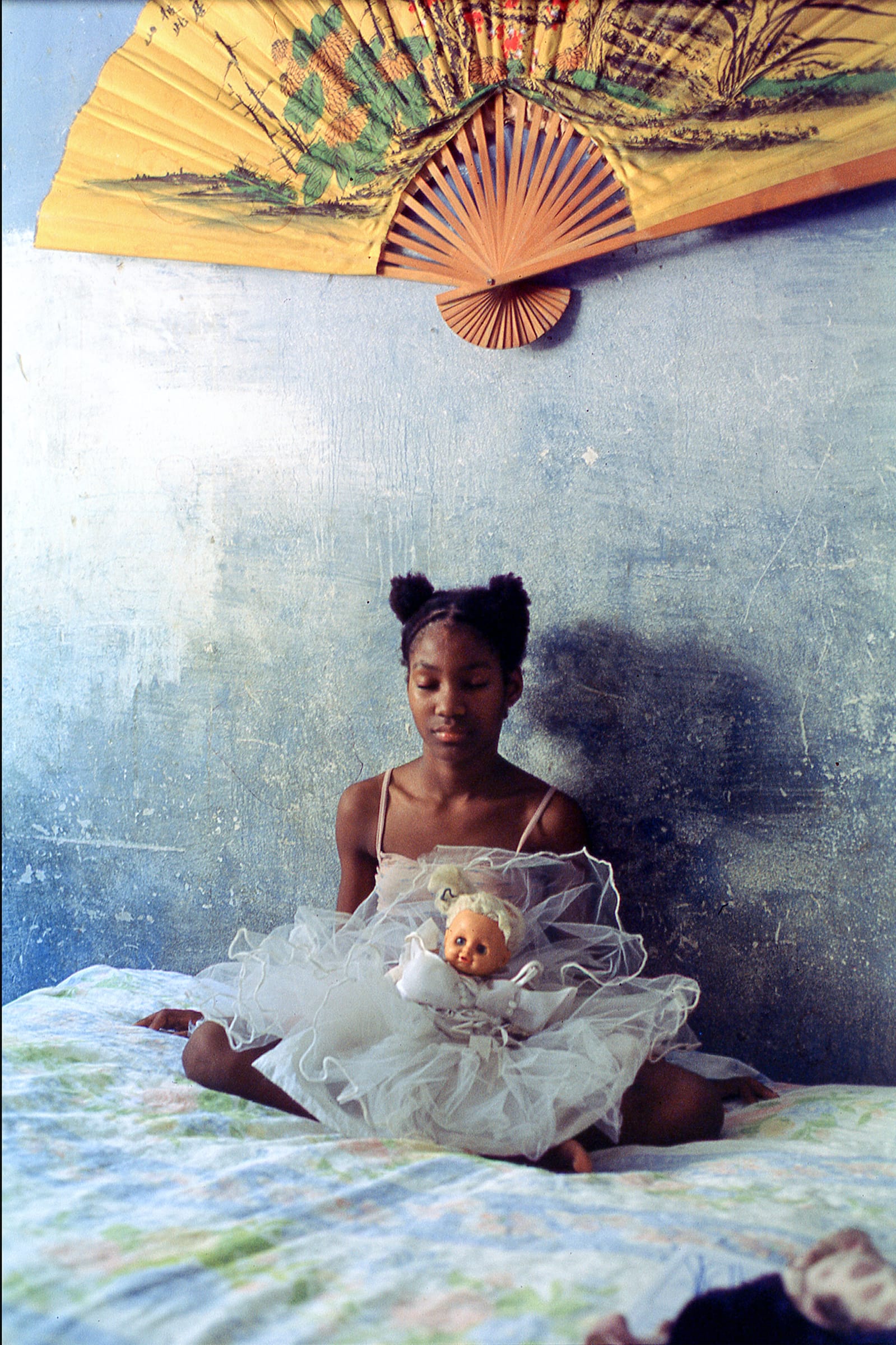
Brazilian photographer Lalo de Almeida, who usually publishes his images in a regional newspaper, also noted that LAFF provides an opportunity to bring his work to more people. The show features photos from two of his long-term projects focusing on how the environmental destruction of Brazil’s Amazon rainforest and Pantanal floodplain impact nearby communities.
This year’s expansion beyond the Bronx was part of the festival’s “paying homage to longstanding cultural spaces and community anchors in New York City — historically or still within predominantly Latin American neighborhoods,” Rivera told Hyperallergic. In Brooklyn, the festival commemorated the longtime Caribbean Social Club with a showcase of archival photography chronicling five decades of the neighborhood staple in a series affectionately named after space’s founder Maria Antonia Cay, better known as “Toñita.” Programming also took place in Queens’s Jackson Heights neighborhood and Manhattan’s Loisaida (as the Lower East Side has long been known by many of its Latine residents).
Rivera told Hyperallergic that another important goal for this year’s festival was “highlighting collectives and organizations teaching youth storytelling, since [this work] has always been the heart of the BDC.” To this point, the show includes a glimpse of the nonprofit Fotokids’s sweeping retrospective of thousands of photographs taken by Guatemalan children over the last three decades.

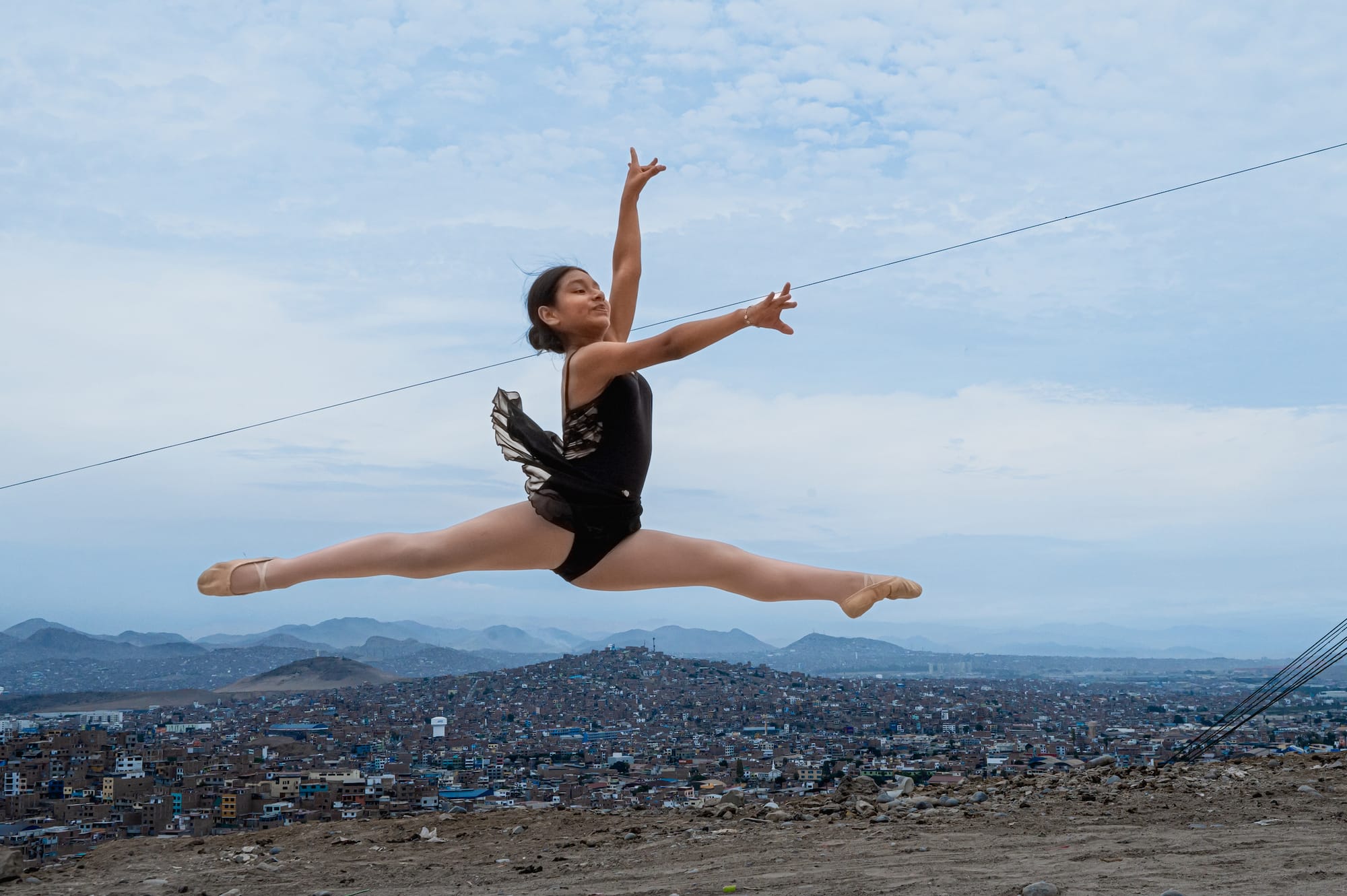
LAFF organizers also added event programming spanning poetry, music, and food "to create a more well-rounded cultural experience" accompanying the photographic projects, Rivera said.
The festival will continue from August 10 until August 31 as a dual indoor-outdoor exhibition at the nonprofit gallery BronxArtsSpace in Hunts Point. In the meantime, exhibitions presenting the work of Lisandra Alvarez and Manuel Almenares are on view for the entirety of the month at the art space La Sala de Pepe in Manhattan.
